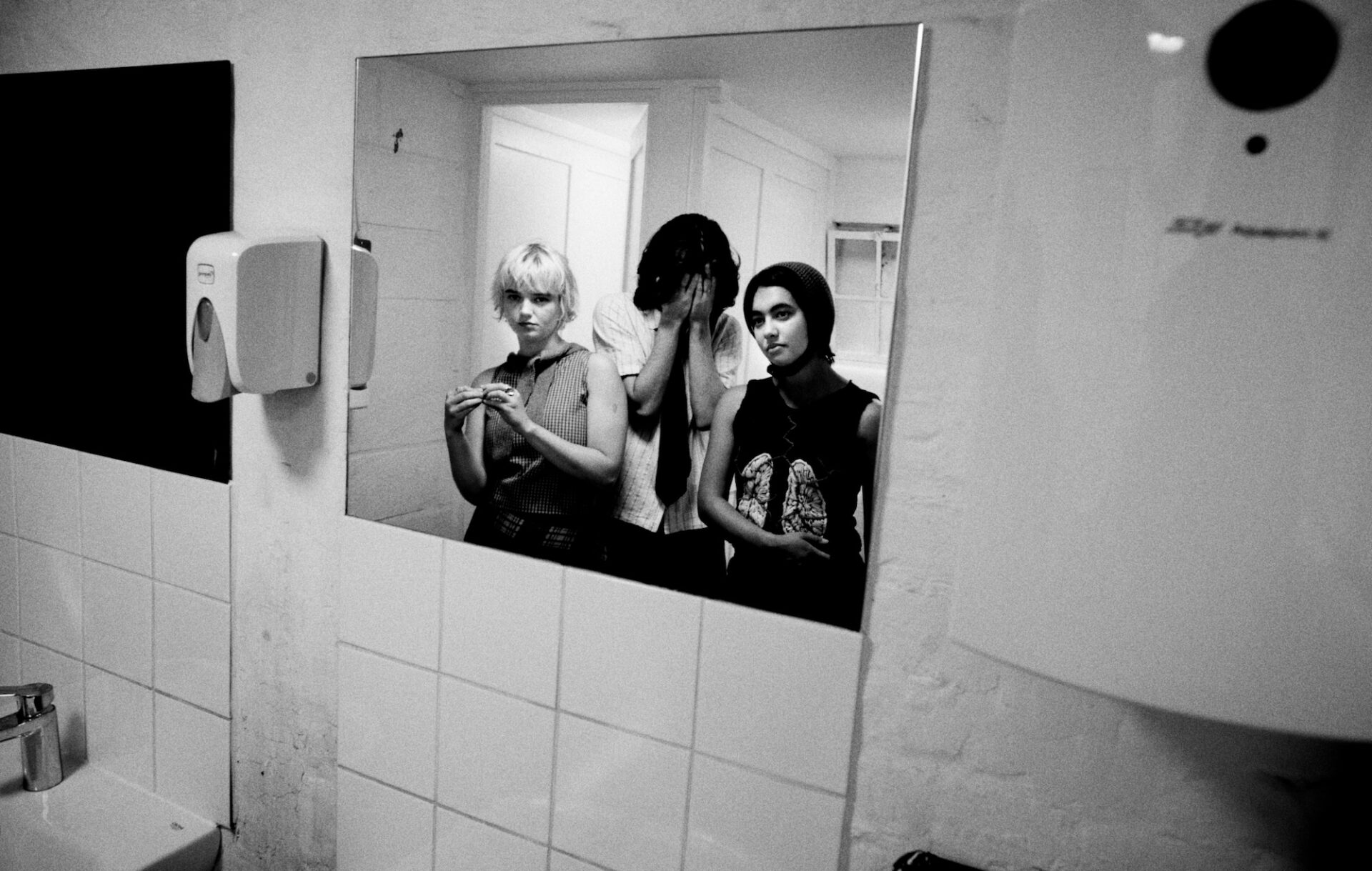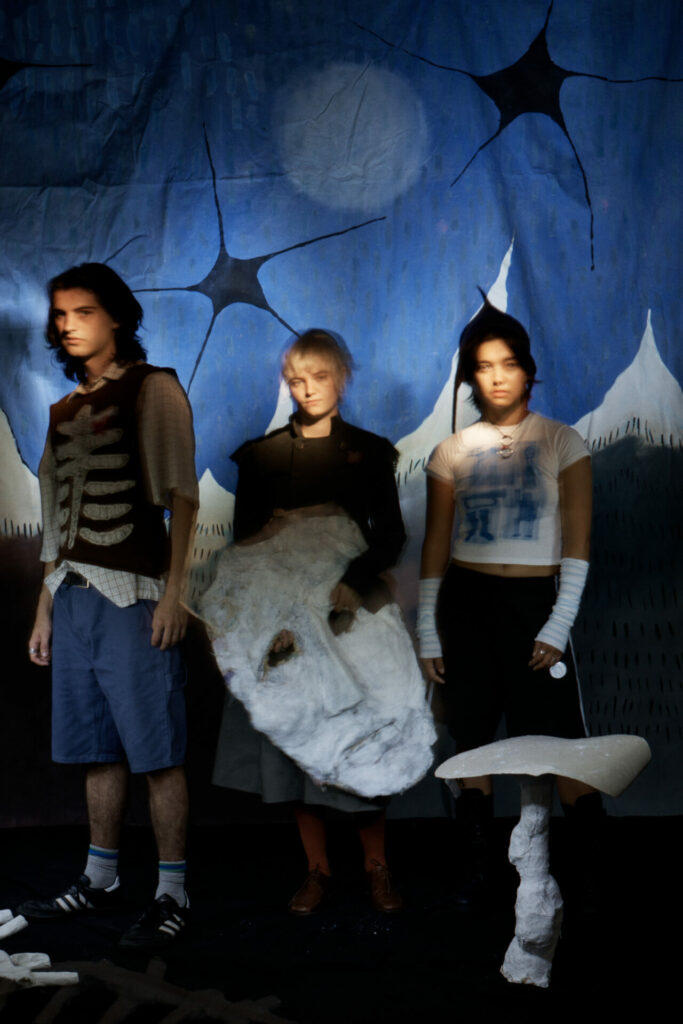Mary in the Junkyard are creating a fascinating world of their own
Yeti funerals, big-name producers and a fiercely DIY ethic: we meet the band making some of the best new rock music in the UK right now.

When entering Mary in the Junkyard’s headline show at south London’s Corsica Studios, Rolling Stone UK is directed towards a side room where a ‘yeti funeral’ is promised before the main event. True to the brief, the second room of the venue — most often used for club nights — plays host to the wake of a character first introduced in the video for the band’s debut single, ‘Tuesday’.
“Yeti not forgeti,” one fan has written in the guest book, while a specially created score on accordion by the band’s vocalist Clari Freeman-Taylor sends foreboding ambient tones through the room as plumes of smoke are pushed out and cover the lifeless creature in the centre.
From the moment they emerged with ‘Tuesday’ last year, Mary in the Junkyard have been fully committed to this type of immersion across their music, artwork and videos. Everything is created by the band themselves — they even made each other stage outfits for the Corsica gig — and feeds into the same fascinating world.
The music itself feels like the tip of the iceberg, but the trio’s early offerings comprise some of the most exciting indie music made in London this decade so far. Led by Freeman-Taylor’s alluring, unique vocals, they make noisy and rowdy guitar pop with significant depth and complexity. Through performing what they estimate as between 30 and 40 gigs at the Brixton Windmill across 2023, the band developed a reputation as a formidable live act, which is transferred onto tape brilliantly on debut EP This Old House.
A few weeks before the Corsica gig, Rolling Stone UK met the band at a pub just over the road from the venue before they headed inside to scope out the room and to put in place perfect plans for the Yeti’s final goodbye. The trio — Freeman-Taylor, multi-instrumentalist Saya Barbaglia and drummer David Addison — are effusive and giddy in conversation, overlapping each other’s points and hammering home the interconnectedness of their lives both as bandmates and friends.
Freeman-Taylor and Barbaglia met in youth orchestra, while Freeman-Taylor and Addison spent lockdown in the project Second Thoughts, which — out of necessity — made their fanbase online and relied on a Discord and TikTok-led approach. “What we’ve done now is a complete reaction to so much music being bedroom-produced,” says Barbaglia, rejecting the idea of the album coming first and then aiming to get those internet-based fans out of the house to a live show. “We didn’t even really think about recording until we’d played so many shows. We were playing live just to play live.”
Through this time period, the band have had the ever-rarer opportunity to cycle through patchy early material away from the baying eyes of the industry or the internet in order to find their sound and their style. “There was a song that lasted about three gigs,” Freeman-Taylor laughs. “We’ve had a lot of duds!”
Barbaglia elaborates, “There was a song called ‘Sandwiches’,” which the band go on to sing for us in unison: “I was trying to butter the bread, but my knife slipped / I’m not well enough to make you a sandwich!
“It was so fun and so outrageous, but it was meaningful at the time,” says Barbaglia, before singing the rest of the endearingly charming early track with glee. “I swear one of the times we played it I cried,” she laughs.
To translate the word-of-mouth success of their live shows, the band connected with XL Recordings boss Richard Russell, who had invited Freeman-Taylor to his ‘seasonal jams’, where a handpicked selection of musicians convene at his studio for sessions to mark each seasonal equinox. Russell had discovered the band through a YouTube video of a live performance, and they ended up being the first band he has ever produced.

As the majority of Russell’s production work is in the electronic sphere, a live room doesn’t exist as such in his west London base. To combat this, Mary in the Junkyard set up in his kitchen. The trio are animated as they discuss the smell of burning incense that filled the room, Russell’s excellent selection of toilet books and the “little bits of wisdom” he would sprinkle into the sessions despite being a largely hands-off producer. “He was definitely thinking big picture, because the songs were more or less done before we went in,” Addison remembers.
With backgrounds in music away from the indie-rock they now make, the trio see the sonic future of Mary in the Junkyard as a blank canvas. “It could go in any direction,” says Addison. Barbaglia adds, “We don’t really have a plan. It’s a case of seeing what happens. Giving ourselves limitations, we want to see how much we can do within that.”
This vision comes into focus at the Corsica show. The gig is defined by a delicate mix of off-the-wall silliness and deeply considered and superbly constructed music. As they play new material with the dexterity of In Rainbows-era Radiohead, a papier-mâché mascot named Brian hangs above them. One of his light-up eyes malfunctions two-thirds of the way through the gig, but it adds to the charmingly ramshackle, DIY nature of the whole thing.
“What’s important to us as a band is that we’re always going to be a bit scrappy,” says Addison. Freeman-Taylor picks up the thread: “We like doing things ourselves. It’s not because we have to — it’s because we want to. It’s important to us to keep that spirit.”
Taken from the June/July issue of Rolling Stone UK – you can buy it here now.
